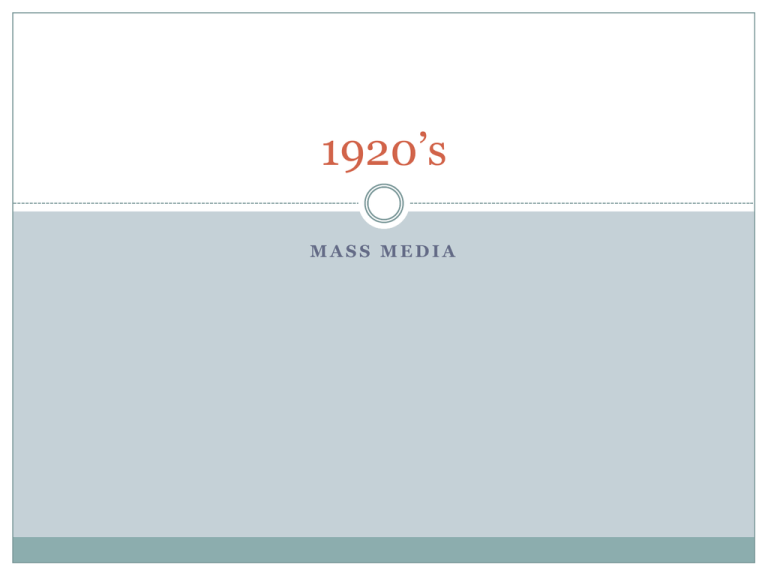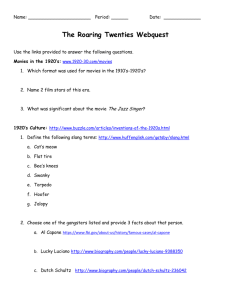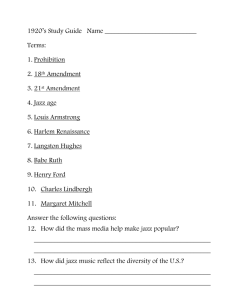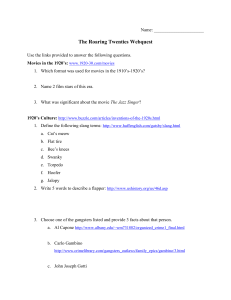Mass media notes - Westerville City Schools
advertisement

1920’s MASS MEDIA Mass Media Before the 1920’s most people did not know much about what was going on in rest of the country, talk with people from other regions, or even read the same news. How did each of the following change? Movies Radio Newspapers/magazines Movies Theaters rose from 5,000 to 22,500 1929 sold 80 million tickets each week Movie making became the 4th largest industry Changed from silent movies to “talkies” Radio Began with broadcasting music and baseball scores Became a medium for advertising 1922- 500 stations NBC linked stations together People all over the country were listening to the same info Newspaper/Magazines Increased in size and circulation Went from 14-50 pages The number of chains doubled People paid to advertise in newspapers The more popular a newspaper was the more they paid for the ad Tabloids and entertainment news By 1929 200 million magazines sold Saturday Evening Post, Reader’s Digest, Ladies Home Journal and Time Jazz Age Jazz music grew out of African American music of the South Recordings available in 1910 but didn’t become popular until 1920 2/3 of radio airtime was dedicated to jazz Some opposed jazz but most came around Jazz Age Harlem was one of the most popular places to listen to jazz Over 500 clubs Charleston was a popular dance Became a national fad Could be danced with partner, group, or alone Jazz inspired other music, paintings, and poems Lost Generation People who were disconnected from their country and its values Pop culture was artless and uninspired Lived in European cities Harlem renaissance Harlem became a cultural center of the US Population rose from 50,000 to 200,000 James Weldon Johnson-leading writer of the Harlem group Executive secretary of NAACP Celebrated blossoming of African American culture Voice of protest of against the suffering of their culture






